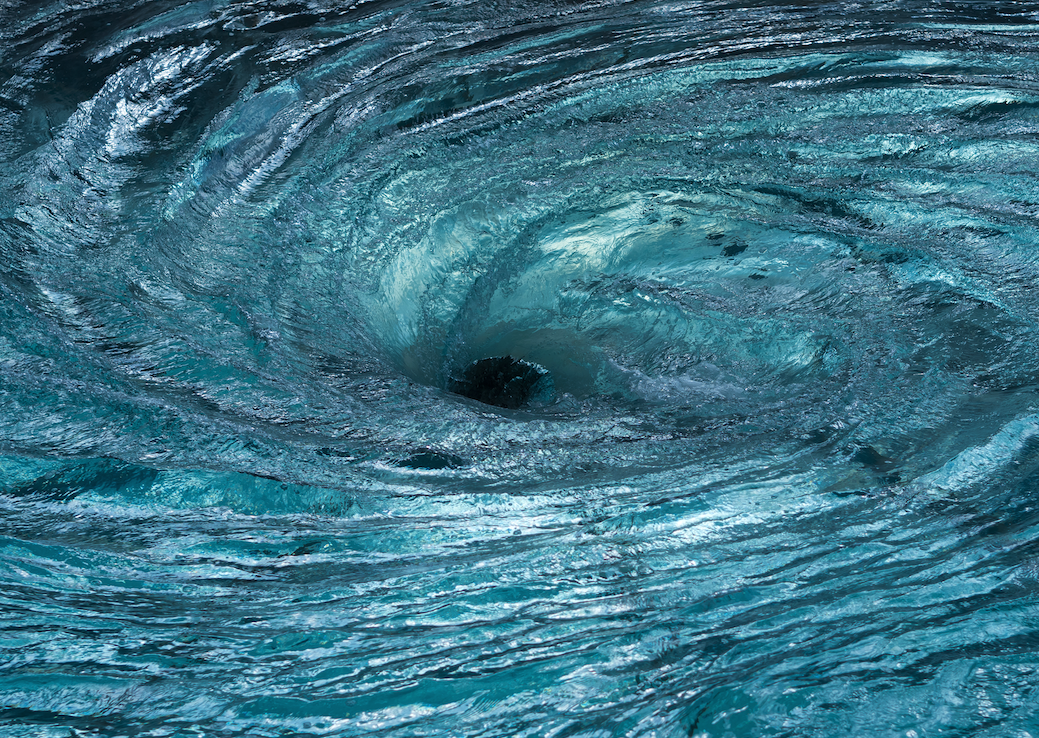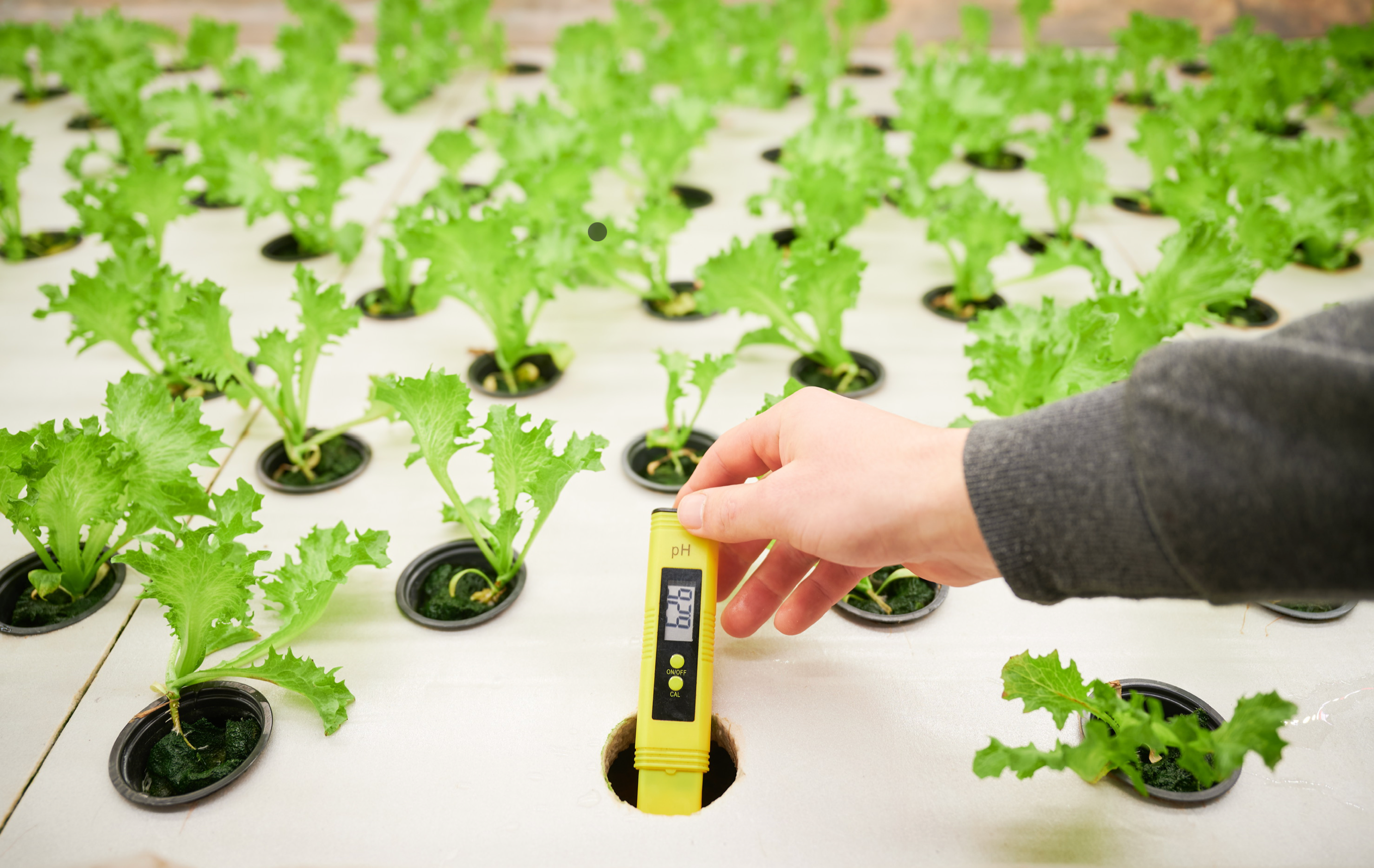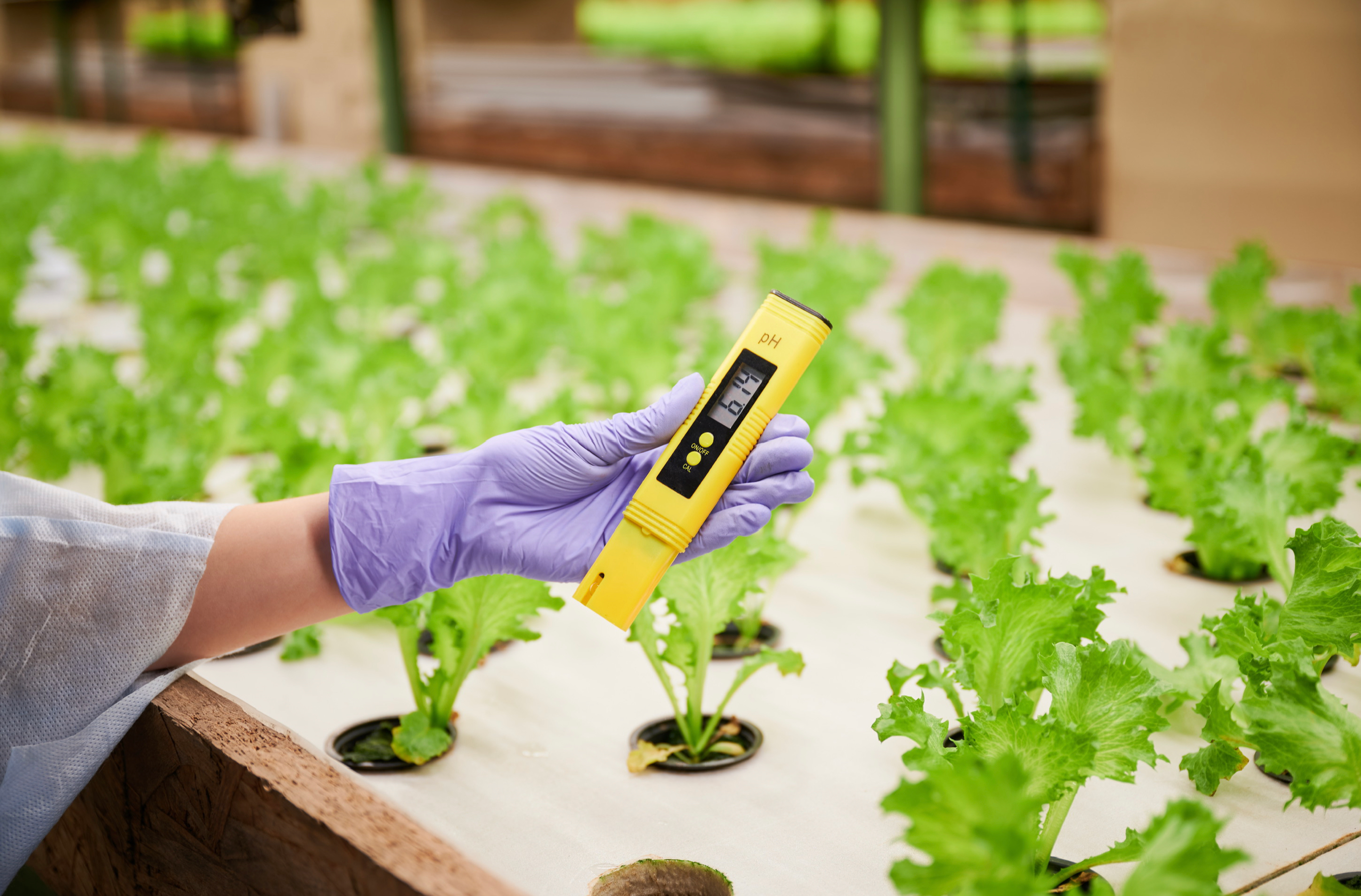Hydroponic Drip System Explained and How to Build
Everything You Need to Know About The Hydroponic Drip System Including a Step by Step Guide on How to Build
In hydroponic Drip systems, also known as ‘top feed’, the nutrient solution is taken from the reservoir and placed into a tube that sends the solution directly to the plants’ roots. There is an emitter at the end of the tube to control how much solution a plant gets, and this can be adjusted to meet the requirements of each plant. Hydroponic Drip systems can be big or small, and they’re easy to alter and make changes to, depending on what you need. Hydroponic Drip systems tend to fall into two categories: recirculating and non-recirculating. A recirculating system is one that drips constantly. If there are any extra nutrients, these go back into the tank holding the solution. You do need to be careful to monitor the nutrient and pH levels when the solution is recirculated. In a non-recirculating system, any excess water drains out and goes off as wastewater.
Hydroponic Drip systems tend to use two pumps, a reservoir, and hoses to deliver the nutrient solution to the roots of your plants. One pump keeps the nutrient solution moving and supplied with oxygen, while the other pump moves the solution through hoses to drip emitters, which then drip nutrients onto the growing mediums.
Drip systems are very popular, and a lot of commercial growers use these systems. It is probably my favorite type of hydroponic system. The system many home growers use is called a ‘recovery’ system (this is another name for the recirculating system mentioned above), where excess water goes back into the reservoir and is recirculated. Commercial growers tend to use non-recovery (or non-recirculating) systems, where any excess water drains out and goes off as wastewater. While this may sound like it’s wasting water, commercial growers do use their water sparingly and use elaborate timers to reduce any waste.
The type of growing medium you use may have an impact on whether you continuously irrigate or whether you irrigate every few hours. Continuous irrigation would be used with expanded clay, whereas with rockwool, you would tend to irrigate every 3 to 5 hours. You may need to do some testing with your irrigation cycles initially to work out what works for your hydroponic garden, as every garden is different.
If you decide to go with a hydroponic Drip system, one thing to keep an eye on is how much the nutrient solution has fluctuations to its pH levels. Plants will obviously take nutrients out of the solution, so you will need to monitor the solution and adjust it accordingly. You need to check that the growing mediums aren’t overrun with nutrients, and if they are, then they can be washed and replaced.
Drip systems can be used to grow leafy greens, lettuce, herbs, tomatoes, peppers, cucumbers, strawberries, eggplant, peas, and garlic. One of the great things about hydroponic Drip systems is that you can also grow large plants in them, such as melons, zucchinis, pumpkins, and onions. You can even grow fruit trees in them too.
These systems can hold a lot of growing medium and tend to work best with peat moss, rockwool, and coco coir. If you wish to scale up, this can be easily done with extra reservoirs and different timing schedules according to the needs of the plants. You can have vertical gardens and towers with Drip systems, which means you can fit a lot of plants into a compact space. You can make use of unusual spaces too, using pots and hoses to get this system to work.
A hydroponic Drip system can have a flexible approach that fits most spaces, and you can grow either singular or multiple plants. If you decide you want to recycle the water, this can lead to higher maintenance. You can really control when plants are fed and watered with this type of hydroponic system. It is also less likely to break compared to some other types of hydroponic systems, and it’s relatively cheap to set up. It could be considered overkill for a small garden, so maybe this isn’t the first hydroponic method to try. But if you have tried others with good success and hydroponic gardening really appeals to you, this could be the next step that you work toward.
Hydroponic Drip systems do require some maintenance. You will need to be constantly monitoring the pH and nutrient levels. You need to ensure that not too many nutrients have built up. You will also need to wash and flush out delivery lines because they can become clogged with bits of plants. Drip systems are more complex than some other hydroponic systems, but this article will aim to simplify this and give you step-by-step instructions on how you can implement a hydroponic Drip system in your own home, should you wish to do so.
The main downside to Drip systems you should be aware of is leakages from the pipes and hoses. A top tip to quickly find these is to use some colored tissue paper that goes darker when wet so that you can see exactly where on the pipe or hose the leaks are coming from. This isn’t a big deal, though, and pipes and hoses are cheap and relatively easy to replace. It is worth having spare pipes and hoses to hand so that you can fix a leak even if it’s late at night or at a time when shops are closed. Another issue with this system is that the water pump can break, so your plants will be left without nutrient solution. It is always worth getting into a routine where you spend a few minutes checking that the water pump works properly each day.
As mentioned earlier, the Drip system is my favorite type of hydroponic system. I think it’s incredibly versatile. It’s relatively easy to set up, inexpensive, and simple to maintain. Plants are aerated in this system, and you can fully control the irrigation.

Building a Drip System
Hydroponic Drip systems are incredibly flexible and easy to scale up. They can be used to grow a great variety of plants. Using this system, the plants are slowly fed a stream of water to the roots of the plants. You can choose to have a vertical or horizontal hydroponic Drip system. Vertical systems are effective and great space savers too, allowing you to fit more plants into the room you have available.
With hydroponic Drip systems, you have a choice whether you feed plants that are in individual plant pots, or whether you feed a larger tray that feeds many plants.
Drip emitters are positioned in containers, and these are connected to a pump that is situated in the reservoir full of nutrient solution. This is pumped through to the drip emitters and will feed the roots of your plants. It’s sensible to have a timer to control the pump, and to allow plants to dry out and take oxygen in between the drip feed.
Drip systems are cost effective because there’s little wasted nutrient solution. It’s easy to keep plants well-fed and watered. This system uses less water than other hydroponic systems. With a Drip system, it is important to ensure that your plants get the nutrients they require. You need to check the drip emitters from time to time to ensure that they are not clogged and flowing effectively, so as not to neglect your plants. Things like bits of plants that have got into the nutrient solution or the formation of algae can cause your emitter to clog, so be aware of this and check for it regularly.
There are 2 different types of Drip systems: recirculating systems and non-recirculating systems
The Recirculating Drip system also goes by the name of ‘Recovery Drip system’ because it is recovering and recirculating any nutrient solution that is in excess and returning it to the reservoir, where it can be recirculated in the future. This type of system needs a vertical set up for the excess water and nutrients to be able to drain into the reservoir below. Having the nutrients recycled is cost efficient. But you do need to keep an eye on the nutrient levels and pH levels of your water, so you will need to monitor this regularly.
If you opt to build a non-recirculating system, your plants won’t recirculate the nutrient solution, and you will just need to top up the reservoir when it looks low. The dangers of a non-recirculating system are that you can end up with wasted nutrients, and if you’re not careful with your timers, the plants could drown from too much nutrient solution being there, and they don’t have the chance to dry out and absorb much needed oxygen. With this in mind, my personal preference is the Recirculating Drip system, and below you will find instructions on how to build this type of system.
If you would like to build a Recirculating Drip system, you will need:
- A drip emitter per plant, unless the plant is very large and it may need more than one. These are also known as ‘drippers’. There are different types of emitters. You can purchase fast-flowing emitters, and it means that your growing medium gets wet quickly, so if you have a medium that doesn’t retain water well, this can be useful. However, I like to use regulated/pressure compensated emitters because they’re much more precise and accurate. Another option you could use, but this doesn’t give you precision, is to have a tube containing holes that the nutrient solution drips out of. These lay next to plants, which means that the nutrient solution isn’t delivered right to your plant’s roots. An emitter helps you control how much nutrient solution and water your plants get. If you didn’t have an emitter, they would simply have nutrient solution continuously, which could rot roots and suffocate plants due to lack of oxygen.
-
PVC tubing to get the water and nutrient solution from the reservoir to the drip emitters. You can buy ½-inch light-proof black vinyl tubing, and this is good for preventing algae growing that could clog your system. You can buy barbed manifold connectors to connect bits, and to ensure it’s a snug fit with no leaks, you can use PVC cement.
- A submersible pump to aerate the nutrient solution and pump it up to the drip emitters. If you think you’d like to add more plants to grow in the future, then you could opt for a better, more powerful pump planning ahead. It’s good if the pump has a water filter to help stop any debris from clogging the pump.
-
A timer (also known as Drip system controllers) to ensure the pump is turned on and off throughout the day. Your flow valves and pressure regulators will allow you to see how much nutrient solution is flowing and at what rate through the system.
- A reservoir, ideally black, because if it got too much light or air, you could end up with bacteria or algae in the nutrient solution. If your reservoir is transparent, then paint it black. You should ideally aim to keep the water in your reservoir 65–75°F (18–21°C). It’s good to have a vertical line on your reservoir where you can monitor the nutrient solution levels.
- Growing medium, this could be coco coir, rockwool, expanded clay pellets, perlite-vermiculite mix, or hydroton. These are to hold your plants roots and support them while they grow. If you choose rockwool, it will need irrigation every 3–5 hours, whereas hydroton allows for continuous dripping.
- Growing container (sometimes also called a flood tray)—it’s good to have room for each plant to have its own pot so that you can make each nutrient flow specific to a plant’s needs. When you make your growing container, ensure it contains drainage holes so that your plants don’t drown in any excess water or nutrient solution. If you want a recirculating Drip system (which I would personally recommend) ensure that your growing container has a draining outlet, which means that any excess nutrient solution will drain back to the nutrient reservoir in a continuous loop. The size of this container or tray depends entirely on how many plants you wish to grow.
- Air stone—while this isn’t essential, they can really help keep your plants’ roots oxygenated. When your plants have oxygenated roots, they will take up the nutrient solution quicker and more effectively. If your reservoir is very large, then include more air stones.
- Hydroponic nutrients—there are different hydroponic nutrients, depending on what stage your plants are at, and what type of plants they are. These have been especially mixed to give your plants all the nutrients they require for their stage of development.
- pH testers and solutions to alter the pH—there will be optimum pH requirements for your plants, and you can adjust the water accordingly to ensure that it is at the right level. In a recirculating/recovery Drip system, it will be necessary to keep testing the pH level to ensure they stay within range because excess water and nutrient solution gets put back into the reservoir. If your plants start to look discolored or ill, this may be because the pH level is not right.
- Tools—when you’re putting together a hydroponic system, there are tools which will come in useful. You may want to borrow them if you don’t own them already. You will need a drill, cutters, filter material, shovels, tape measures, and PVC glue.
Instructions
- You will need to drill a hole in the reservoir’s lid at each end—one is for the airline from the air pump to the air stone and to the submersible pump, the other hole is for tubing from the nutrient solution from the pump to the drip emitters.
- Connect the pump to the tubing and drip emitters.
- Put growing medium and pants in your containers.
- Place the drip emitters into the plant pots.
- Ensure the plant containers are above the reservoir so that excess water and nutrients can drain back into the reservoir.
- Fill your reservoir container with nutrient solution.
- Attach the timer to the reservoir pump.
- When you first set up a Drip system, it is worth monitoring how wet your plants are over a week so that you can monitor and adjust your system until you get it right. You want your plants to get enough water and nutrients, but not too much so that they drown because then they won’t have a chance to dry out and won’t be able to take in oxygen. You will need to experiment with this until it’s right. As a rough guide, many people choose to have their pumps come on via a timer three times a day, and they allow the nutrient solution to become fully saturated during this time. Plants which are more established and mature may need more nutrients and water in comparison to young and very small plants. In the heat of summer, you may find that your plants become drier and need more moisture too.
- If you have completed a growing cycle and have successfully grown the plants you wanted to, before growing a new lot of plants, it is important to clean and thoroughly sterilize the hydroponic system. Carefully clean the reservoir and ensure that there is no debris in it. If there is some leftover debris, this could clog up parts of your system and bacteria could form there.
- If you start to grow a lot of plants or want to do this commercially, then you may want to purchase a small UPS (uninterrupted power supply) in case there is a power cut so that nutrients are still pumped to your plants. Another solution would be to have a generator.
For more great content check out the Proponics YouTube channel below!

By Max Barnes
Max Barnes is a long-time homesteader and author. Max grows the majority of his own food year-round using a variety of different methods, including hydroponics. Hydroponic gardening plays a huge part in his homestead and self-sufficiency goals.




